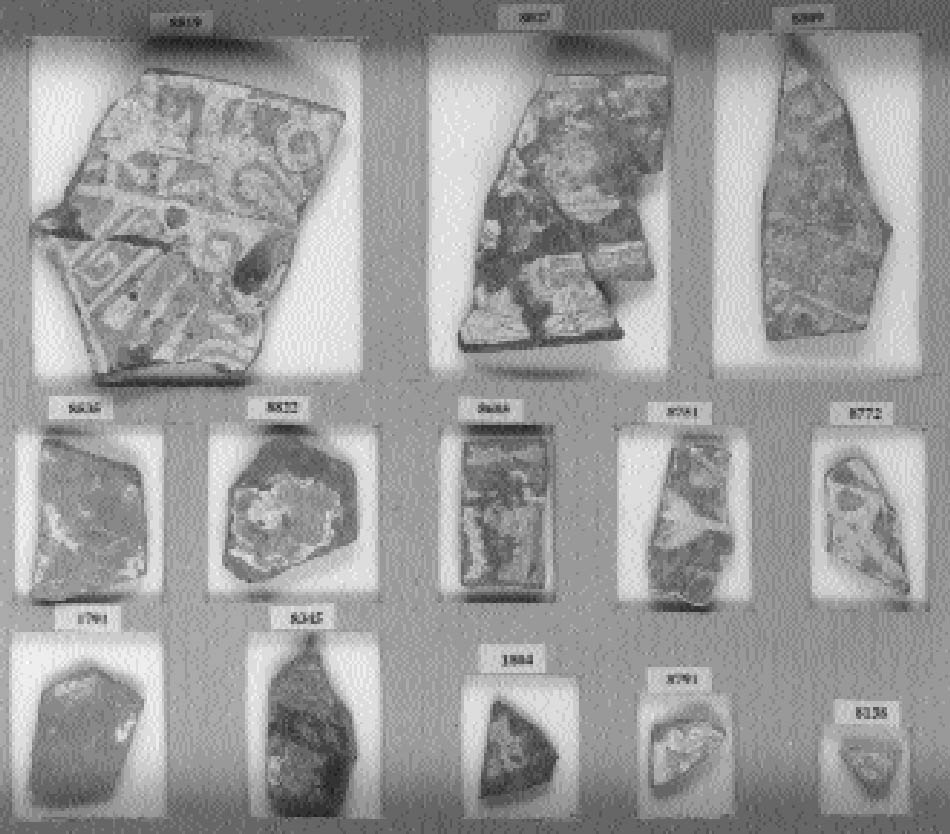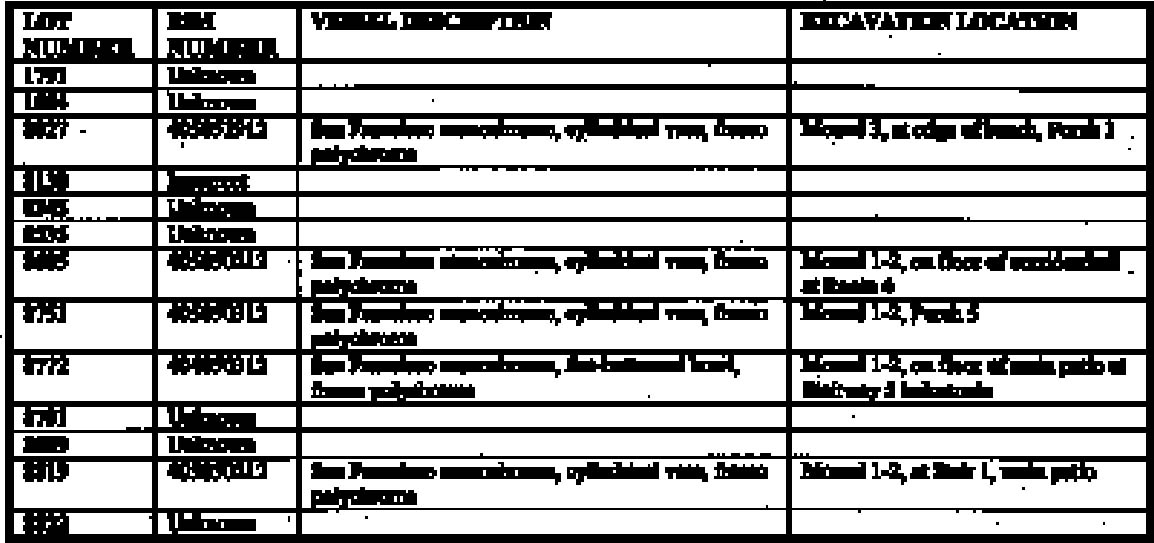STUCCOED TRIPOD VESSELS FROM TEOTIHUAC�N: AN EXAMINATION OF MATERIALS AND MANUFACTUREJessica M. Fletcher
1 INTRODUCTIONStuccoed cylindrical tripod vessels from Teotihuac�n can be found in museums around the world, and yet they remain objects surrounded by mystery. Most have been excavated from elaborate burials, but repairs on the vessels such as crack-lacing suggest that they had a function during life as well (Conides 1997). It is not even certain who applied the delicate While much has been written on the subject of the mural paintings from Teotihuac�n, comparatively little analytical data have been published on stuccoed cylindrical tripod vessels. Notable studies include Castillo Tejero's (1968) survey of decorative techniques and pigment types that included five samples from Teotihuac�n. Shepard's appendix to Excavations at Kaminaljuyu, Guatemala (1946) also includes descriptions of sherds from Teotihuac�n. She discusses analyses of ceramic body, stucco, and pigments. Specific to analysis of the clay matrix is Kolb's “Analyses of Archaeological Ceramics from Classic Period Teotihuac�n, Mexico, A.D. 150–750.” Published in 1997, this paper discusses the pastes and aplastics of Teotihuac�n ceramic artifacts. Both the small number of literature sources and the materials variation that they indicate clearly demonstrate the need for further analytical research on stuccoed tripod vessels. This study was conducted with the goal of characterizing a specific group of stuccoed pottery fragments from Teotihuac�n. Thirteen representative sherds (fig. 1) were selected from approximately 150 that were available from the archaeological site known as Maquixco Bajo (also designated TC-8). Maquixco Bajo was a large period village situated outside the western boundary of urban Teotihuac�n. Five excavations had been conducted at this residential area during the 1961 and 1962 field seasons (Sanders 1994). The 150 available sherds had all been stored together loosely in a box, so pigment transference was a certainty. Consequently, the primary criterion for the sample selection was to isolate those sherds that exhibited the least evidence of disruption. This culling narrowed down the choices considerably and did not allow for a random sampling. Sherds exhibiting
Analysis of the 13 sherds included pigment identification, stucco identification, characterization of the ceramic surface preparation, as well as further investigation into binders and the technology of application. The techniques employed for analysis included scanning electron microscopy (SEM), microchemical testing, polarized light microscopy, x-ray powder diffraction (XRD), and Fourier transform infrared spectroscopy (FTIR). To place the results of this research in context, a brief introduction to Teotihuac�n is necessary.
|

